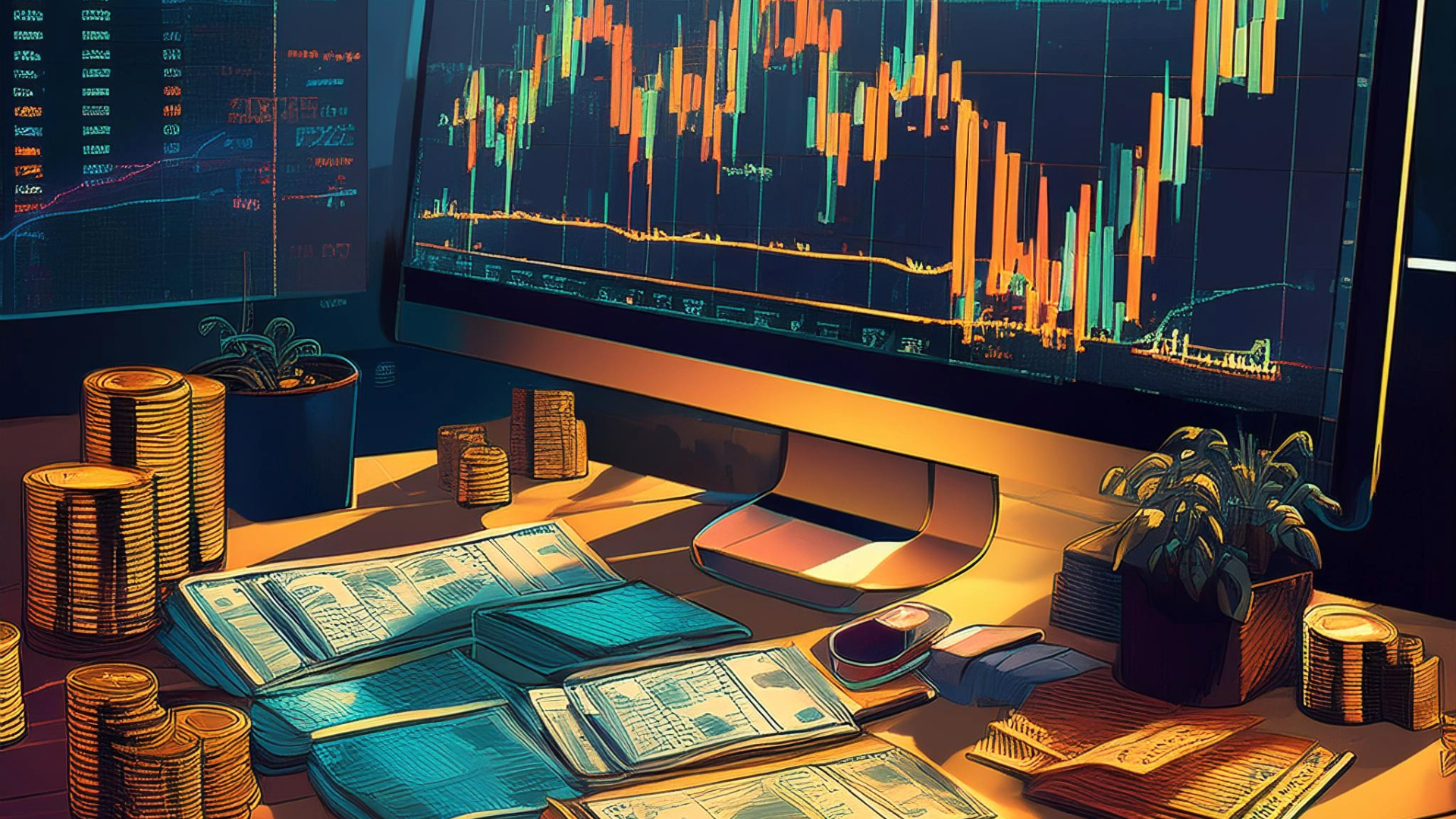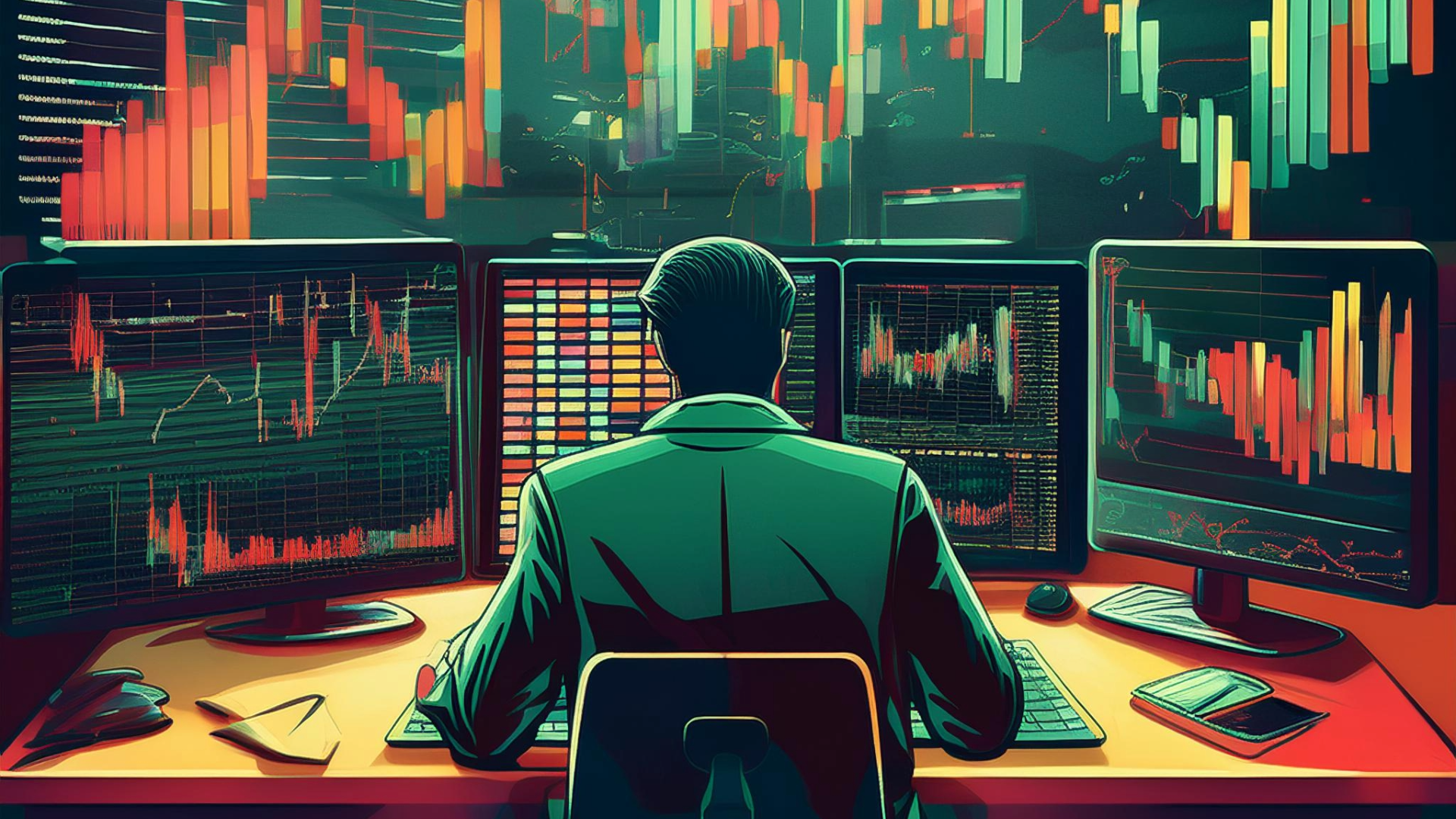We live in a fast-paced world where everyone wants quick ways to earn extra money without working longer hours or adding stress.
One popular way people are doing this is through day trading. It’s popular among people who know a lot about finance, as well as beginners who are just starting to understand how markets work.
Their goal? To take advantage of quick price changes in the market, making extra money without giving up much time or energy.
If you want to learn about day trading, popular strategies, risks, or tools traders use, this article is for you.
Let’s get started!
Day Trading Basics
Before talking about strategies, risks, or tools, let’s clearly understand what day trading really is.
So, what exactly is day trading?
Day trading is an active way of trading that many traders like to use. It means buying and selling stocks, currencies, or other financial assets within a single day.
If you’re a day trader — or want to become one — you must close all your trades on the same day you open them. This helps avoid big price swings and limits your losses.
Your goal is to make money from small but quick price movements, without leaving trades open overnight, which could increase your risks.
Many traders like day trading because it offers the chance for quick profits. But, like any trading method, it requires a good understanding of the market and quick, smart decisions.
If you want to learn how to become a successful day trader, keep reading. We got plenty of information to help you understand day trading and make the best decisions.
What is Forex Day Trading?

Day trading can be done on any financial market, and one of traders’ favorite choices is the Forex market.
Before explaining Forex day trading, let’s quickly understand what Forex is:
Forex is a global market where people trade currencies. It’s one of the largest markets in the world, with daily transactions worth over $5 trillion.
Forex day trading means you buy and sell currency pairs (like EUR/USD, GBP/JPY, or USD/CHF) within the same day.
Usually, these trades last only minutes or a few hours. Traders do this to profit from price changes happening during the day.
Why is Forex great for day trading? Because it’s highly active and open 24 hours a day, 5 days a week (Monday morning to Friday night). This means you can trade anytime, depending on your strategy and when the market is busiest.
As mentioned earlier, day traders don’t keep positions open overnight. On the Forex market, this rule helps reduce the risks that might occur during the night when markets slow down.
Popular Markets and Instruments for Day Trading

The most popular markets for day trading usually have high liquidity (many buyers and sellers) and volatility (fast price changes). This lets you quickly profit from price movements.
Here are some examples:
- Forex (Currency Market) We already talked about Forex above. You can learn more by checking our detailed Forex article.
- Stocks (Stock Market) You’ve probably heard of this market. Here, you trade shares of companies. Companies raise money by selling shares, and you can make money by investing and selling these shares. Prices can move based on company performance or external events like economics or politics.
- Cryptocurrencies (Crypto Market) When you think of crypto, you probably think of Bitcoin. But there are many cryptocurrencies, such as Ethereum, Binance Coin, Cardano, or Dogecoin. Cryptos are digital currencies you can use for buying goods, services, or just as investments. Because crypto prices change very quickly and the market is open 24/7, it’s popular among day traders.
- Futures Contracts This market lets you agree to buy or sell assets (stocks, gold, oil, or crypto) at a fixed price in the future. Traders use futures to profit from price changes (speculating) or to protect themselves from price changes (hedging).
- Commodities Market Here you trade basic goods, usually natural resources used as materials for products or consumption. Commodities like oil and precious metals are often very volatile, making them attractive for day traders.
Day Trading Strategies

To become a profitable trader, you need an advantage. That’s where good strategies come in. You must adapt these strategies to your own needs and to the specific market you trade. And you’ll keep improving them over time to always get better results.
Here are some of the most popular day trading strategies:
- Scalping This strategy involves making many small trades quickly, each with small profits. Traders using scalping take advantage of tiny price changes, closing trades in seconds or minutes. They believe small profits add up to significant earnings.
- News Trading With this strategy, traders make decisions based on news. They closely follow the news and identify situations that could affect prices, deciding when to buy or sell based on this information.
- Technical Analysis One of the most popular methods, this strategy uses historical price data to predict future price movements. Traders look for repeating patterns in charts (like triangles, head and shoulders, double tops) or signals from indicators (RSI, MACD, moving averages). These signals help traders decide when to buy or sell.
But these strategies (scalping, news trading, and technical analysis) aren’t methods we use or recommend, mostly because they’re uncertain. They’re subjective, meaning different traders can interpret charts and indicators differently. So results are unpredictable.
Also, these strategies require lots of time staring at screens, analyzing charts, reading signals, and finding the perfect timing. This can become tiring and stressful, without guaranteeing success.
At Trading Busters, we prefer using a clearer, more predictable method with much higher success rates.
Statistics and Probabilities
This revolutionary trading concept was created in 2018 by George Statie, CEO & Founder of Trading Busters. It’s the method we use, recommend, and teach anyone who wants to take their trading to the next level without relying on subjective strategies that take too much time and effort.
What makes this method different?
- It uses pure math, statistics, and probabilities.
- It doesn’t require you to stare at a screen for hours. Depending on your strategy, you might only trade for 10–20 minutes per day.
- It removes all emotions from trading. Once you have your strategy, you know exactly what to do and won’t make impulsive decisions due to stress, anxiety, or fear of missing out (FOMO).
Things to Consider Before You Start Day Trading

Here are three tips that will help you get off to a good start with day trading:
1. Educate Yourself — Knowledge is more valuable than quick profits
Before you start trading, you must understand how markets work. How can you make smart decisions if you don’t understand the market, especially when each wrong decision can cost hundreds or even thousands of dollars?
Never underestimate investing in your education — it’s the only way to truly make informed decisions.
2. Learn to Manage Your Risk
Once you start trading, protect your money. Don’t take huge risks — the more you risk, the more you could lose. Instead, use a solid strategy you understand and follow carefully.
Keeping risks low and predictable will help you achieve your goals and keep trading calmly and confidently.
3. Be Patient and Disciplined — You’ll need them to become a successful long-term trader
Patience and discipline are essential if you want to succeed as a trader. Even though the excitement of the market might tempt you to take bigger risks for quick wins, this approach won’t help you in the long run.
Long-term success doesn’t happen overnight, and it doesn’t come from impulsive choices. Staying calm, being disciplined, and keeping emotions under control are keys to success.
How to Start and Learn Forex Day Trading

Example of a Day Trade
To understand clearly how day trading works, here’s an example of a winning trade:
Imagine you want to trade the currency pair EUR/USD. After a quick look at the chart, you notice the price recently dipped and is now moving upward.
You predict the price will continue going up, so you open a “buy” trade at the price of 1.1500.
You set a stop loss at 1.1480 to limit potential losses in case the price goes down.
You also place a take profit at 1.1550, meaning your trade will automatically close once your desired profit is reached.
During the day, the price rises to 1.1550, hitting your target. Your trade automatically closes, and you earn money from this trade.
Essential Techniques for Day Trading
To become a skilled day trader, you might need to master some of the following techniques:
- Trend Following
This basic technique involves trading in the direction of the market’s main movement.
If you see a strong upward or downward trend, it’s likely the price will keep moving in the same direction. You can benefit from this by quickly opening and closing trades following the trend.
To spot trends, you can use tools like trend lines or moving averages (MA).
- Chart Analysis
Learn to read charts clearly so you understand market trends.
Though this requires consistent attention, chart analysis helps you find the best times to open or close trades.
- Short-Term Trading
Day traders usually focus on short time frames, like 1-minute, 5-minute, 15-minute, or 30-minute charts, to quickly profit from small price movements.
- Scalping
This quick technique involves making small profits from very short-term price changes.
Scalpers usually open and close multiple trades within just a few minutes to gather small profits from each trade.
Reverse or Pullback Trading
Reverse trading means opening a trade in the opposite direction of the market’s current movement, usually after a quick price reversal.
For example, if the market rises quickly and then begins to drop, you might open a selling position expecting the price to correct downward.
However, it’s crucial to understand important levels of support and resistance, as well as some basic technical analysis principles, to correctly identify when to close your trade. Otherwise, you risk closing your trade at the wrong moment, resulting in losses.
Momentum Trades
Momentum trades happen when market prices move quickly and strongly in one direction. To benefit from momentum trades, you should only open a position when you’re confident the price will continue moving up or down.
Before entering these trades, check technical indicators like RSI (Relative Strength Index) or MACD (Moving Average Convergence Divergence). These indicators help confirm whether it’s a good moment to open a momentum trade.
Types of Trading Orders You Should Know
If you want to trade efficiently, here are some helpful types of orders:
- Market Orders — Buy or sell immediately at the current market price.
- Limit Orders — Place these orders if you want to buy or sell at a specific price. The trade will only happen when the market reaches your set price.
- Stop Orders — Orders that trigger automatically when the market reaches a specific price, helping protect you from large losses.
- Stop-Limit Orders — Combines Stop and Limit orders, allowing you to set both a trigger price and a specific entry price.
How to Do Technical Analysis
Many traders still use technical analysis — one of the most popular, yet unreliable trading methods. If you’re interested, here’s how to get started:
- Study past charts: Technical analysis relies heavily on historical price data. This helps identify market trends.
- Choose technical indicators: Indicators like RSI, MACD, or Bollinger Bands can help you assess market momentum and spot buy or sell signals.
- Identify price patterns: Pay attention to chart patterns (like triangles, head and shoulders) to predict market direction changes.
- Analyze trading volumes: Volumes tell you about the strength of price movements. High volume often shows a strong trend.
Even though technical analysis is popular, it can be unpredictable and stressful for beginners. That’s why we don’t recommend starting your trading journey with technical analysis. It can lead to burnout from long hours spent analyzing charts or dealing with unexpected losses.
If you’re looking for an easy-to-understand method that can help you achieve consistent profits, try trading based on Statistics and Probabilities instead.
Indicators and Tools Used by Day Traders
Here are some important indicators day traders often use:
- RSI (Relative Strength Index) — Shows if an asset is overbought or oversold and helps identify possible price reversals.
- MACD (Moving Average Convergence Divergence) — Uses the crossing of two moving averages to spot trend changes.
- Moving Averages — Help identify short-term or long-term trends.
- Bollinger Bands — Measure market volatility and help identify moments when prices move too far in one direction.
- Fibonacci Retracement — Highlights possible support and resistance levels based on Fibonacci numbers.
Additionally, there are many advanced trading platforms that allow you to quickly place orders, track market movements, and analyze real-time charts.
How Much Does a Day Trader Earn?

It’s hard to say exactly how much a day trader earns. Earnings depend on various factors, including your experience, the amount of money you invest, the strategies you use, and your knowledge.
However, it’s important to understand that day trading always involves risks. The more you educate yourself, learn about markets, and practice your strategies, the better you can manage risks and increase your profits.
Risks of Day Trading

- Market Volatility — Fast market changes can lead to big wins, but also big losses. Avoid taking unnecessary risks, or you could lose a lot.
- Bad Strategies — If your trading strategy isn’t working or giving consistent profits, you must fix or change it. Good strategies act as your safety net, protecting you from costly mistakes.
- Fatigue — Day trading can be very tiring, especially if you don’t know when to stop. Spending too many hours watching charts can make your decisions worse and lead to expensive errors.
- Managing Emotions — Day trading requires quick decisions, and the pressure can negatively affect your emotions. Fear, greed, or anxiety can lead to irrational decisions and financial losses. A well-defined strategy helps you stay calm and avoid impulsive trades.
- Lack of Risk Management — If you don’t have a plan to manage risks, you might trade too often, make impulsive decisions, or take unnecessary risks. Always consider your risk-to-reward ratio. For example, risking $1,000 just to earn $100 isn’t wise or sustainable.
Day Trading on the Stock Market

Day trading stocks involves buying and selling company shares within the same trading day. It’s the same day trading method discussed earlier, just specifically applied to stocks.
Day trading on the stock market is fast-paced. You’ll need good analytical skills, market knowledge, and the ability to quickly make decisions.
Tips and Strategies for Beginner Day Traders

Before you begin day trading, consider these important points:
- Learn as Much as Possible — Knowledge gives you a clear picture of the industry and helps you choose the right market. Many online courses and MasterClasses are available. Sign up, educate yourself, and start your trading journey the right way.
Create Your Own Trading Strategy — A strong strategy is key to long-term trading success. After researching and gathering information, clearly define the rules of your strategy. Be realistic about your monthly goals, set strict entry and exit rules, and carefully manage risks. - Start with a Demo Account — Don’t rush into trading real money. Use a demo account first, which allows you to practice trading with virtual money. Most trading platforms offer this, helping you learn without stress or financial risk.
- Open a Real Trading Account — Once comfortable, open a real account and begin trading with small amounts of real money. Start small to learn how markets move and how your decisions affect your profits. Gradually increase your trades as you gain confidence and experience.
About Trading Busters
Trading Busters is a global community of over 60,000 traders who trade smartly and effectively. We help traders become profitable by using strategies based entirely on Statistics and Probabilities, a revolutionary concept we’ve developed from scratch.
Our approach provides a clear, modern alternative, eliminating stress, unnecessary losses, risks, and emotional trading. Plus, you won’t have to spend hours staring at charts.
Join our Telegram group and discover a completely new and much more profitable way to trade!


